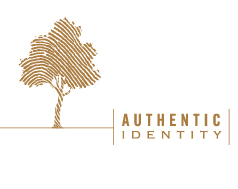Why is business so bad at change? Research consistently shows that 70% of change initiatives fail. The cost is enormous – not only in money, time, effort and wasted opportunity, but also in cynicism, detachment, exhaustion and the erosion of leadership credibility. It’s a huge price to pay.
As one frustrated business leader told me recently “It feels as if there are no cables attached to the levers I’m pulling.”
So what’s going on here? Is this a failure of leadership? An inevitable consequence of the complexity that comes with scale? The invincible power of inertia in our organizations?
Or could it be that the scientism promoted by Frederick Taylor's 1911 work The Principles of Scientific Management and later adopted and developed by the business schools, has distorted both our mental model of business and our approach to leadership?
We have come to think of business as a machine, and to define value solely as money. You can hear it in the language we use: our colleagues and collaborators have become “human capital” or “human resources” – assets to be deployed rather than human beings to be led and inspired to greatness.
As a consequence, we have come to view the challenge of change as essentially a problem of logic and argumentation. “If we can just make the logical case bullet-proof, the numerical analysis solid, the empirical evidence overwhelming then our people will be motivated to make the necessary change”, so the thinking goes.
So we refine the recursion analysis, revisit the ROI, nail down the numbers and power-up the PowerPoint presentation. We do it repeatedly. We’ve been doing it for decades. And we watch in frustration as 70% of our change initiatives continue to fail.
The tools we are using are wrong for the job. Belief and desire, even in the absence of proof, can move people to make change. But proof, in the absence of belief and desire, cannot. We need another way – and that’s where the Elephant comes in.
The Rider and the Elephant is a metaphor used by psychologist Jonathan Haidt in his seminal book The Happiness Hypothesis to explain the relationship between our conscious, rational self (the rider) and our unconscious, feeling self (the elephant). The metaphor has been adopted and used to great effect by Chip Heath and Dan Heath in their recent book Switch - How to Change Things When Change is Hard (they previously wrote Made to Stick).
We like to think that our rational executive function is in charge of our decisions and actions, but our automatic feeling self has a ten-ton advantage and it doesn’t need logical explanations. The rider may make the case for moving in a certain direction, but unless the elephant also wants to follow that path, no-one is going anywhere.
Our insistence on viewing business as an undertaking based overwhelmingly on science, logic and reason has rendered us monolingual. Business speaks almost exclusively in the language of the Rider. The trouble is, Elephants are not impressed by recursion analysis, they’re not swayed by business cases and they don’t care much what the metrics say.
Elephants Don’t Read PowerPoint
So how do we persuade the elephant to take the rider’s directions, and the rider to respect the elephant’s instincts? To do so, we need to talk about the role of identity and meaning in the organizations that we construct and lead.
The work and the organizations to which we give so much of our lives should reward us with meaning as well as money. Leaders worth following can articulate and embody that meaning. To do that authentically, you need to know who you are. Moving the elephant means entering the world of meaning, identity, symbolism and story.
Leaders who can connect that human world with the traditional business imperatives of profitability and shareholder return, and who honor the value of each equally, will attract followers willing to move mountains and build organizations that both generate wealth and move our human community forward.


